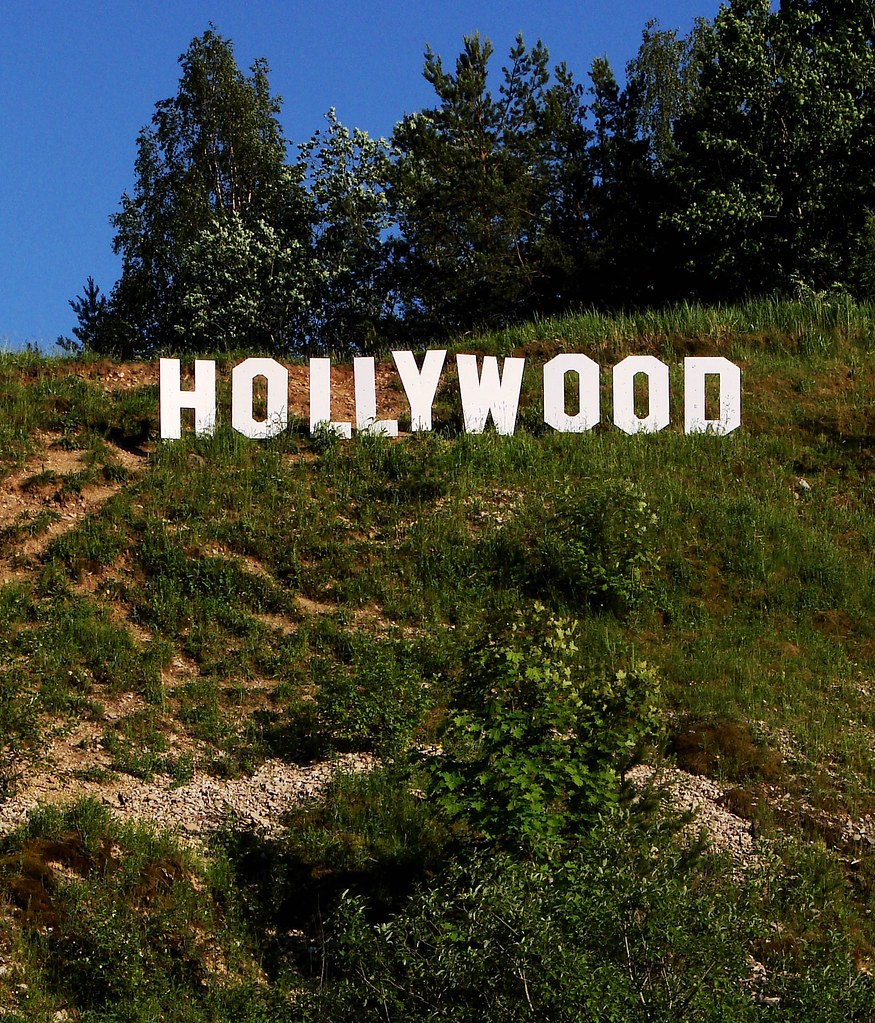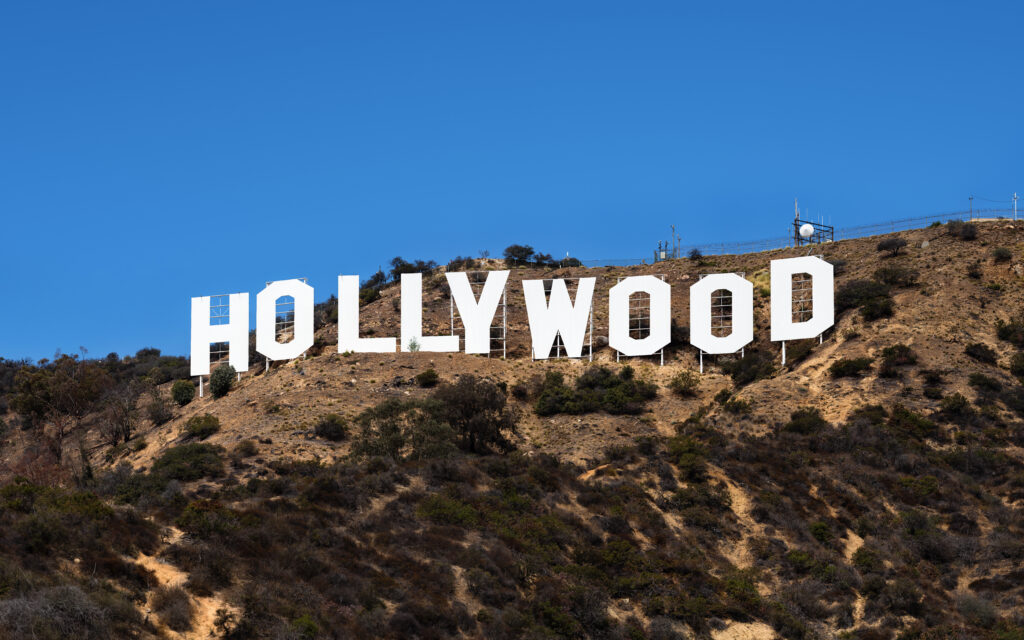
Hollywood is a town built on dreams and shattered ambitions, a place where fortunes can turn on a dime, or, more accurately, on a single film’s box office performance and critical reception. We often celebrate the blockbusters and the Oscar winners, but the flip side of that glittering coin is far darker: the cinematic misfires that don’t just flop, but actively dismantle an actor’s carefully constructed career, leaving them in the cold. It’s a brutal reality, a stark reminder that even the most talented can find their star power extinguished by one ill-fated project.
While most movie stars are resilient enough to survive a flop or two, there are specific roles that completely upend an actor’s trajectory, leaving them out of work or forever changed in the public eye. The blame isn’t always fair; women, historically, tend to bear the brunt of career-shaking backlash, and often, many reasons contribute to stardom hitting a wall. Yet, when an actor seems to drop off the radar, it’s usually a specific film to blame.
This deep dive isn’t just a morbid fascination with failure, but an in-depth cultural analysis into how catastrophic productions became indelible stains on resumes, altering legacies and sending once-promising careers spiraling. We’re going beyond box office numbers to explore the narratives behind these theatrical tragedies, dissecting the bad scripts, questionable decisions, and unfortunate timing that coalesced to create these career-killers. Prepare to witness Hollywood’s most infamous landmines, starting with seven shocking examples where one film destroyed not just a box office, but a career.

1. **Halle Berry in “Catwoman” (2004)**Halle Berry, an actress of immense talent and the recipient of a historic Oscar win, saw her career path significantly altered by the 2004 cinematic disaster, “Catwoman.” Despite her prestige, Berry noted in 2024 that her options are sometimes “limited,” citing a shortage of good roles for Black women. Her career, and the broader entertainment landscape, might look different had “Catwoman” been a better film. This was meant to be a trailblazing opportunity, casting Berry as the first Black Catwoman in a multi-million-dollar production, but it was squandered on an awful script, widely deemed more ist than empowering.
Berry, admirably, handled the critical and financial failure with remarkable grace, famously accepting her Razzie for Worst Actress in person. Holding her Oscar in one hand and her Razzie in the other, she acknowledged the film’s missteps with admirable self-awareness. Yet, nearly 20 years later, the sting of this “hairball” of a movie clearly still lingers, impacting her professional choices and the types of roles available to her.
“Catwoman” not only bombed spectacularly but also left a lasting imprint on Berry’s career. While she has continued to work, her most high-profile projects since have primarily placed her in ensemble casts. Her subsequent lead roles have frequently fallen short of the immense potential she demonstrated pre-“Catwoman,” serving as a stark reminder of how a single misstep can redefine an actor’s entire trajectory, even an Oscar winner’s.

2. **Sharon Stone in “Basic Instinct 2” (2006)**While “Catwoman” contributed to Sharon Stone’s rough patch, it was truly the long-delayed sequel, “Basic Instinct 2” (2006), that delivered an ice pick to her once-illustrious career. The original 1992 hit propelled Stone to the Hollywood summit, transforming her into an A-list star. Its sequel, however, brought things full circle in the worst possible way, dismantling everything the first film had built for her, especially since “nobody was asking for Catherine Tramell’s return” by 2006.
The film’s existence was primarily driven by a desperate director, Stone’s pay-or-play contract, and a studio’s misguided attempt to avoid simply paying her off without a product. The resulting film was a critical and commercial disaster, widely panned for failing to recapture the original’s spark, instead devolving into self-parody. Stone’s committed performance couldn’t overcome the inherent absurdity of a script that felt entirely unnecessary and tonally confused, leading to widespread audience and critical rejection.
Ultimately, “Basic Instinct 2” didn’t just underperform; it officially revoked Sharon Stone’s A-list status. While she has continued to find roles in television and smaller films, the days of her headlining major studio productions were effectively over. It’s a classic case of a sequel not only failing to live up to its predecessor but actively diminishing the legacy of its star, forcing her to navigate a significantly altered professional landscape.

3. **Eddie Murphy in “A Thousand Words” (2012)**For a significant portion of his career, Eddie Murphy was an unparalleled box office titan, able to shrug off flops knowing hits were around the corner. However, as the 21st century wore on, Murphy’s ability to consistently pack theaters dwindled, culminating in the 2012 release of “A Thousand Words,” a film that proved to be the last straw. Plagued by multiple delays, the film was uniformly panned by critics, and more importantly, audiences simply “didn’t show up either,” with the comedy barely making back half its budget.
The film’s disastrous reception had immediate and long-lasting consequences for Murphy’s career trajectory. In a telling sign of its perceived value, “A Thousand Words” was unceremoniously “dumped straight to video in the UK,” foreshadowing the significant shift his career would undergo. This move underscored that the era of Eddie Murphy as an undeniable theatrical draw was drawing to a close, effectively killing his reign as a live-action box office king.
Since this critical and commercial bomb, almost all of Eddie Murphy’s subsequent films have been streaming exclusives, directly bypassing traditional theatrical releases. While some of these streaming projects have performed well, reconnecting him with audiences in a different medium, “A Thousand Words” undeniably cemented his move away from theatrical leading roles, with only animated projects offering a consistent exception to this new reality.

4. **Jaden Smith in “After Earth” (2010)**Jaden Smith, having charmed audiences as a child actor, was positioned to test his bankability as a teenage lead with the 2010 sci-fi epic, “After Earth.” The film notably featured his father, Will Smith, in a supporting role, but even with Will’s charisma “dialed down,” Jaden’s performance unfortunately came off as “whiny and disinterested.” While it’s unfair to lay all the blame solely on him, as he was saddled with “awkward dialogue” and served as “the only actor on screen for much of the runtime,” the film “might’ve asked too much of somebody so young.”
Despite these mitigating factors, as the designated star, Jaden inevitably endured the brunt of the backlash accompanying “After Earth’s” poor critical and commercial reception. The movie was a significant disappointment, failing to resonate, and Jaden’s performance became a primary target for criticism. This intense scrutiny and negative reception served as a crushing blow to his aspirations for a leading film career, marking a stark contrast to his earlier promise and public perception.
In the aftermath of “After Earth,” Jaden Smith has appeared in only a handful of movies, signaling a significant shift in his public persona and career focus. Today, he is “better known for his music, social media presence, and… well, being Will and Jada’s kid.” “After Earth” fundamentally reshaped his public identity, transforming him from a promising young actor into a multi-faceted celebrity whose acting career, at least in a leading capacity, has largely taken a backseat.

5. **Ezra Miller in “The Flash” (2023)**For Ezra Miller, the path to cinematic stardom was already fraught with significant challenges, long before the 2023 release of “The Flash.” Their highly publicized “off-screen shenanigans” had already led many to argue Miller’s career had “stopped dead in its tracks,” creating a whirlwind of negative publicity and legal troubles. In Hollywood, however, the bottom line often dictates narrative, and a commercial success could, theoretically, have granted Miller a surprising, if controversial, free pass to rehabilitate their image.
Alas, even with the considerable negative buzz already swirling, “The Flash” bombed harder than almost anyone could have imagined, a catastrophic financial failure for Warner Bros. While “superhero fatigue” was a factor, there’s “no denying that Miller’s behavior also alienated audiences,” creating a PR nightmare that a blockbuster performance might have otherwise mitigated. This public disengagement underscored how personal conduct, when notorious enough, can translate into tangible commercial impact.
Ezra Miller is still young, and there remains the possibility they “could turn their life around in the future.” However, the old adage “you can’t outrun the past” rings particularly true in the unforgiving entertainment industry. It is “safe to assume this will be the last time Miller headlines a roughly $200 million production,” a sobering indicator of how deeply and perhaps irrevocably “The Flash” and the controversies surrounding its star have impacted their leading-role potential.

6. **Greta Garbo in “Two-Faced Woman” (1941)**Greta Garbo, a name synonymous with Hollywood’s Golden Age, achieved global fame and successfully transitioned from silent films to talkies. Yet, even for an icon, a string of commercial failures could prove fatal. Following the box office disaster of “Conquest” in 1937, an article controversially deemed Garbo “box office poison,” though her Oscar-nominated turn in “Ninotchka” two years later hinted at a brief resurgence of her appeal.
However, this glimmer of hope was tragically short-lived. It was 1941’s “Two-Faced Woman” that delivered the definitive blow, ending Garbo’s acting career in a manner that was both commercially and critically disastrous. The film failed to connect with audiences and critics, becoming another significant failure on her record and directly preceding the conclusion of her contract with MGM. This cumulative damage cemented her decision to step away from the limelight entirely.
Despite receiving other offers and occasionally expressing interest in returning, “Two-Faced Woman” ultimately became her final film role. Garbo famously retreated into a private life, shunning public appearances and maintaining an air of mystique. Even when the Academy later granted her an Honorary Oscar, she steadfastly “decided against accepting it in person.” Thus, “Two-Faced Woman” didn’t just end a chapter; it closed the book on one of Hollywood’s most enigmatic and revered careers.

7. **Klinton Spilsbury in “The Legend of the Lone Ranger” (1981)**The role of the Lone Ranger appears to be a uniquely cursed mantle, and this legacy certainly extended to Klinton Spilsbury, whose career ended not long after it began with 1981’s “The Legend of the Lone Ranger.” This film served as both his debut and swansong. Spilsbury found himself caught in legal disputes between the studio and the original Lone Ranger, Clayton Moore, but even without external pressures, his own problematic behavior on set and significant ego were noted.
The problem, as the film’s reception brutally highlighted, was that Spilsbury “didn’t have the talent to back up his ego.” His performance was so uneven and unconvincing that the filmmakers made the drastic decision to “redub his lines,” effectively replacing his vocal performance. This unprecedented move, a clear indictment of his acting abilities, became a significant talking point and a damning indicator of his unsuitability for a leading role, eroding public confidence.
Ultimately, if the film’s “horrendous box office” performance didn’t entirely kill Spilsbury’s nascent career, then “the reputation he garnered on set” – and the public knowledge of his voice being replaced – certainly would have. “The Legend of the Lone Ranger” became a legendary flop, a monument to misguided ambition. For Klinton Spilsbury, it wasn’t just a movie that bombed; it was a singular, decisive event that ensured his name would forever be synonymous with a career that ended before it truly began.
As we continue our unflinching journey through Hollywood’s most notorious misfires, we shift our gaze from initial shockwaves to the lingering aftershocks. These aren’t just stories of box office bombs; they are deep dives into how specific cinematic missteps effectively halted careers, forcing actors into entirely new trajectories or, in some cases, out of the spotlight forever. The following seven examples reveal the diverse and often cruel ways a single project can irrevocably reshape a star’s professional destiny, proving that in this industry, one bad role can truly be a career’s undoing.

8. **Maxwell Caulfield in “Grease 2” (1982)**The original “Grease” was a cultural phenomenon, but its sequel, “Grease 2,” proved to be a harsh lesson in diminishing returns. Paramount, initially hesitant, greenlit the follow-up only after the first film’s monumental success. With John Travolta and Olivia Newton-John unavailable, the production was left scrambling for new leads, settling on Maxwell Caulfield as Michael Carrington, the Australian Sandy’s British cousin.
Caulfield arrived on set with the understandable ambition of becoming the next John Travolta, poised to inherit the mantle of teenage heartthrob. However, the film’s disastrous box office performance and critical drubbing quickly extinguished that dream, stalling his career for years. It was a stark reminder that lightning rarely strikes twice, especially when trying to replicate unique star power and nostalgia with a different cast.
The film’s impact was so severe that even co-star Michelle Pfeiffer, who would later achieve stratospheric success, might have shared a similar fate. She was, thankfully, saved by her breakout role in “Scarface” the very next year. This sequel wasn’t merely a misstep; it was an active impediment to burgeoning careers, a clear example of how one film can create a professional chasm.
While Caulfield has, over the decades, graciously embraced the film’s eventual cult following, the initial reception upon its release hit him “like a bucket of cold water.” It underscored the brutal immediacy of Hollywood’s judgment, where an actor’s hopes can be drowned by audience apathy and critical disdain.
9. **Faye Dunaway in “Supergirl” (1984)**Faye Dunaway, one of the definitive faces of the New Hollywood movement, saw her star begin to wane as the 70s gave way to the 80s. While “Mommie Dearest” often gets cited as a career-killer, that film at least made a profit and garnered cult status. “Supergirl” (1984) offered no such silver lining.
Dunaway starred as the villainous Selena in this cinematic endeavor, and despite not being the titular hero, her name is the one most associated with this “super-sized turkey.” Her involvement lent an air of gravity to what was, at its core, a poorly conceived superhero flick struggling to find its tone. It was a peculiar miscasting that only amplified the film’s inherent flaws.
Dunaway reportedly clashed with director Jeannot Szwarc on set, aiming to inject more comedic elements into Selena’s portrayal. Szwarc, however, adamantly “shot Dunaway down,” insisting she play “the straight person.” This artistic conflict likely contributed to a performance at odds with her natural comedic timing, or perhaps, perfectly in sync with the film’s overall incoherence.
The ultimate irony is that while Dunaway hoped for genuine humor, audiences instead “would laugh at Dunaway’s performance,” though “not in the way she might’ve hoped for.” “Supergirl” became a significant black mark, symbolizing how even a talent of her caliber couldn’t escape the gravitational pull of a truly bad script and direction, further cementing her decline from leading lady status.

10. **Steven Seagal in “Half Past Dead” (2002)**By the early 2000s, Steven Seagal was already navigating the choppy waters between mainstream theatrical releases and the less glamorous realm of direct-to-video productions. After his 2001 film “Exit Wounds” performed modestly, some hoped for a Seagal resurgence. However, that faint flicker of optimism was decisively extinguished just one year later.
The release of “Half Past Dead” in 2002 proved to be a darkly prophetic title, encapsulating the industry’s verdict on Seagal’s time in the cinematic spotlight. It was a clear declaration that his era of drawing audiences to theaters was effectively “half past dead,” signaling a profound and perhaps irreversible shift in his career trajectory.
While any film opening against a behemoth like “Harry Potter and the Chamber of Secrets” was destined for an uphill battle, “Half Past Dead” barely registered. It struggled to crack the top five on its opening weekend before swiftly vanishing from theaters altogether. This rapid disappearance wasn’t just a commercial failure; it was a public abdication of his theatrical drawing power.
In the two decades since this pivotal bomb, Seagal has largely followed his film into obscurity, consistently “churning out almost nothing but home video productions.” “Half Past Dead” formalized his exile from the mainstream, proving that even a once-prolific action hero can find their career relegated to the bargain bin.

11. **Dennis Rodman in “Simon Sez” (1999)**Dennis Rodman, the NBA legend, was an undeniable talent on the basketball court, a magnetic and controversial figure. Yet, his foray into film acting proved far more short-lived. Following “Double Team” with Jean-Claude Van Damme, Rodman attempted to headline his own action vehicle, the 1999 film “Simon Sez.”
The premise alone strained credulity: audiences were asked to believe that the flamboyant athlete was a seasoned Interpol agent. Predictably, neither Rodman’s improbable job title nor his acting abilities were remotely convincing. His low-energy, often monotonous performance fundamentally clashed with the high-octane action sequences, creating a disorienting viewing experience.
Compounding these issues was Rodman’s undeniable “zero chemistry with cast members like Dane Cook,” an essential ingredient for any action-comedy. This lack of connection, combined with a baffling and disjointed plot, culminated in a film that was, to put it mildly, an “airball at the box office.” It was a spectacular cinematic miss.
While Rodman would make a couple of subsequent film appearances, “Simon Sez” effectively sealed the fate of his career as a leading man. This bomb served as a decisive statement from Hollywood and audiences: his unique charisma, so potent on the basketball court, simply didn’t translate to the big screen in a leading capacity.

12. **Gene Kelly in “Xanadu” (1980)**Gene Kelly, a name synonymous with unparalleled cinematic artistry, spent decades crafting a legacy as one of Hollywood’s most exceptional triple threats. Yet, even a legend like Kelly couldn’t escape the peculiar pitfalls of the late 70s and early 80s film landscape. In 1980, he found himself “skating” into a role in “Xanadu,” a film that became less a testament to his brilliance and more a bizarre cultural artifact.
“Xanadu” was an ambitious, if ultimately misguided, attempt to fuse disparate elements: disco themes, classical Greek mythology, and a contemporary nightclub setting. It comes as “not surprising to see why this plot didn’t exactly resonate with most audiences,” who were likely left bewildered by its tonal inconsistencies and narrative excesses.
Admittedly, Kelly’s “joyful presence is a welcome addition to the movie,” offering glimpses of the infectious energy that made him a star. However, even his legendary charm couldn’t salvage the overall film from its self-inflicted wounds. Whether it was the overly bold aesthetics or the convoluted story, the musical “failed to garner much love,” instead becoming a critical punching bag.
The film’s utterly “awfully reviewed title even helped inspire the infamous Razzie awards.” Tragically, for a star of Kelly’s magnitude, he “wasn’t able to step out of the shadow of this misfire musical before he retired from Hollywood,” leaving “Xanadu” as a sour, if iconic, note on a career otherwise defined by brilliance.

13. **Kelly Clarkson & Justin Guarini in “From Justin to Kelly” (2003)**The meteoric rise of “American Idol” in the early 2000s turned ordinary hopefuls into household names overnight. After Kelly Clarkson and Justin Guarini emerged as the show’s inaugural winner and runner-up, Hollywood executives, keen to capitalize on their newfound fame, swiftly orchestrated a plan: to transform the singing sensations into bona fide movie stars with “From Justin to Kelly.”
While both Clarkson and Guarini were prepared for concert stages, their nascent acting chops were, unfortunately, not quite ready for the big screen. They were further hampered by being “stuck in an extremely cliched story about a will-they won’t they romance that starts during spring break.” The entire project felt less like a crafted film and more like a contractual obligation.
Unsurprisingly, “in the end, the movie lost big at the box office,” failing to attract audiences beyond the most die-hard Idol fans. The commercial failure was so profound that “the company didn’t even bother releasing a studio album of the soundtrack,” a stark indicator of how little confidence remained. It became a cautionary tale of reality TV fame not translating into cinematic stardom.
Thankfully, both Clarkson and Guarini, demonstrating remarkable resilience, successfully “pivoted to successful careers afterwards” in music. While “they each get the occasional acting role,” the specter of their disastrous big-screen debut looms. It’s safe to say “we don’t expect a ‘Justin to Kelly’ sequel anytime soon.”

14. **Julia Sweeney in “It’s Pat” (1994)**During the early 1990s, Julia Sweeney carved out a distinctive niche as a prominent cast member on “Saturday Night Live.” Among her memorable characters, the androgynous Pat stood out, captivating audiences with a comedic premise centered on the inability of others to definitively determine Pat’s gender identity. It was a character that thrived in short sketch format.
However, in a decision that bewilders in retrospect, studio executives convinced themselves this one-note character demanded a feature-length film. The entire “bulk of the plot revolves around people trying to figure out Pat’s gender identity,” a concept that, stretched over an hour and a half, rapidly lost any comedic appeal. Critics and audiences agreed it wasn’t a comedy.
The film was an unmitigated disaster, both critically and commercially, “grossing less than $100,000 on an $8 million budget.” This catastrophic financial failure wasn’t just a poor showing; it was a resounding rejection of the premise, the character, and the entire ill-advised endeavor. It signaled that what worked for a few minutes on late-night TV could not sustain a full cinematic narrative.
In the wake of “It’s Pat’s” spectacular flop, Sweeney’s career as a leading lady effectively stalled. While she “was able to pick up small roles in film and tv after the flop,” it “took nearly a decade for her to become a series regular on a show again.” “It’s Pat” remains a classic example of a beloved sketch character buckling under the weight of cinematic ambition.
From promising young actors and seasoned veterans to comedic geniuses and sports icons, these stories serve as stark, often brutal, reminders of Hollywood’s unforgiving nature. A single film, whether a misguided sequel, a tonal disaster, or a deeply flawed premise, can irrevocably alter a career’s trajectory, sending stars spiraling from the A-list to the sidelines. It’s a testament not only to the power of a bad movie to devastate but also to the sheer resilience required to navigate such a fickle industry, where the line between blockbuster and career-ender is often razor-thin and relentlessly unforgiving.



